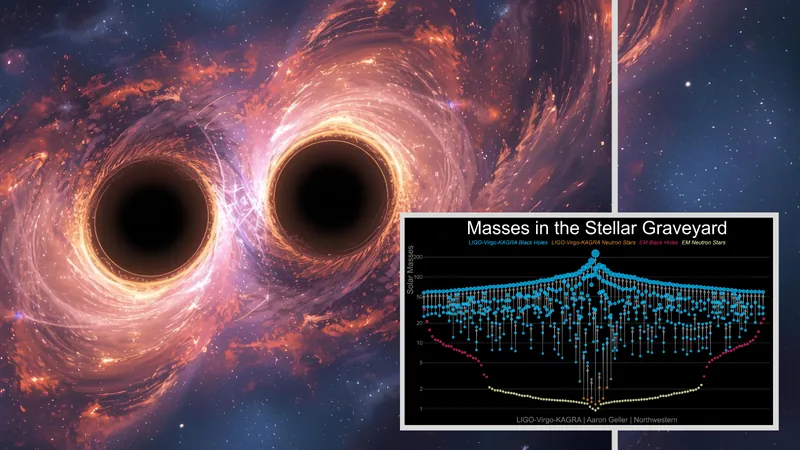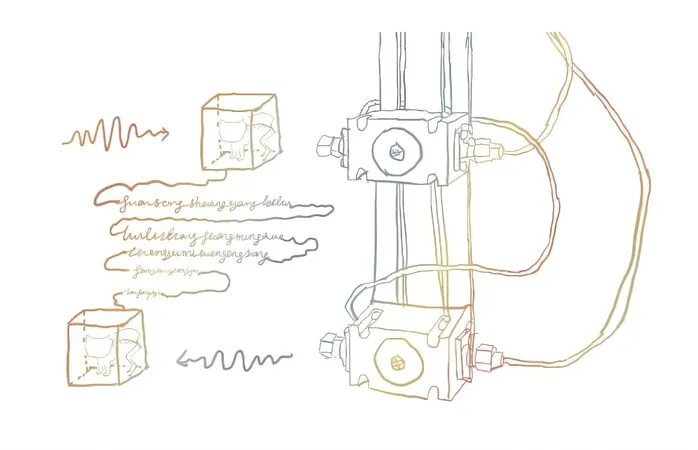
Cosmic Revelations: Astronomers Uncover a 'Stellar Graveyard' of Black Holes and Neutron Stars!
2025-09-04
Author: Jia
Astronomical Breakthroughs in the Search for Stellar Remnants
In an exciting leap forward for astrophysics, astronomers have harnessed gravitational waves—those elusive ripples in the fabric of space-time first theorized by Einstein in 1915—to uncover what they describe as a "stellar graveyard". This previously hidden region is crammed with mergers of extreme stellar remnants, including black holes and neutron stars, resulting from the explosive deaths of massive stars.
New Discoveries from Gravitational Wave Detectors
Recent data from the LIGO, Virgo, and KAGRA observatories have unveiled a staggering doubling of known 'mixed mergers' involving both black holes and neutron stars, now totaling two. The fourth operational run of these detectors, which took place between May 2023 and January 2024, revealed 128 fresh merger events—an impressive leap that dramatically enhances our understanding of cosmic events in this domain.
"Our latest findings showcase the remarkable capabilities of our international gravitational-wave detector network, coupled with advanced analysis techniques that help us decode even the faintest signals," remarked Daniel Williams, head of the research team at the University of Glasgow. He emphasized that these observations have expanded our grasp of this cosmic graveyard, especially with the discovery of the heaviest black holes to date.
Unlocking the Secrets of Cosmic Life Cycles
This innovative research not only deepens our comprehension of the stellar cycle that leads to the birth of black holes and neutron stars but also illuminates how black holes can grow in size by colliding with and merging into one another. This cosmic detective work could be likened to a paleontologist studying ancient bones; by examining the remnants of these cosmic giants, we can learn about their lives.
Christopher Berry, another member of the team, highlighted that the most massive stars, which live brief and explosive lives, often escape closer study. Some of these stars originate in densely packed stellar environments, significantly increasing the chance for a black hole formed from one merger to team up with another.
Insights into the Universe's Expansion Rate
The research offers exciting prospects for understanding not just the life cycles of enormous stars, but also the Hubble Constant—the rate at which the universe is expanding. Rachel Gray, an IGR researcher, pointed out that black hole mergers allow scientists to measure their distances with precision, providing vital data to refine the Hubble Constant and answer fundamental questions about astrophysics.
Loudest Gravitational Wave Signal Detected Yet!
One standout event in this new dataset is the gravitational wave signal designated GW230814, which has been confirmed as the loudest ever detected by these advanced instruments. This discovery sets the stage for testing Einstein's theory of general relativity in ever more rigorous ways, as scientists hunt for any potential deviations from this cornerstone of physics.

 Brasil (PT)
Brasil (PT)
 Canada (EN)
Canada (EN)
 Chile (ES)
Chile (ES)
 Česko (CS)
Česko (CS)
 대한민국 (KO)
대한민국 (KO)
 España (ES)
España (ES)
 France (FR)
France (FR)
 Hong Kong (EN)
Hong Kong (EN)
 Italia (IT)
Italia (IT)
 日本 (JA)
日本 (JA)
 Magyarország (HU)
Magyarország (HU)
 Norge (NO)
Norge (NO)
 Polska (PL)
Polska (PL)
 Schweiz (DE)
Schweiz (DE)
 Singapore (EN)
Singapore (EN)
 Sverige (SV)
Sverige (SV)
 Suomi (FI)
Suomi (FI)
 Türkiye (TR)
Türkiye (TR)
 الإمارات العربية المتحدة (AR)
الإمارات العربية المتحدة (AR)